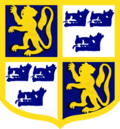 Arms of Chelsea College | |
| Type | Public |
|---|---|
| Active | 1890–1985 |
| Location | , |
| Campus | Urban |
| Affiliations | King's College London, University of London |
| Merged with King's College London | |


Chelsea College of Science and Technology was established as a College of Advanced Technology on a single site on the corner of Manresa Road and King's Road, Chelsea, London SW3, as part of the University of London in 1966. In 1969 it expanded into new premises on Hortensia Road Chelsea to house the Departments of Zoology and Botany and accommodate M.Sc courses in applied biology. [1] It was granted its royal charter in 1971 at which time it was renamed Chelsea College. In 1985, it merged with King's College London. [2]
